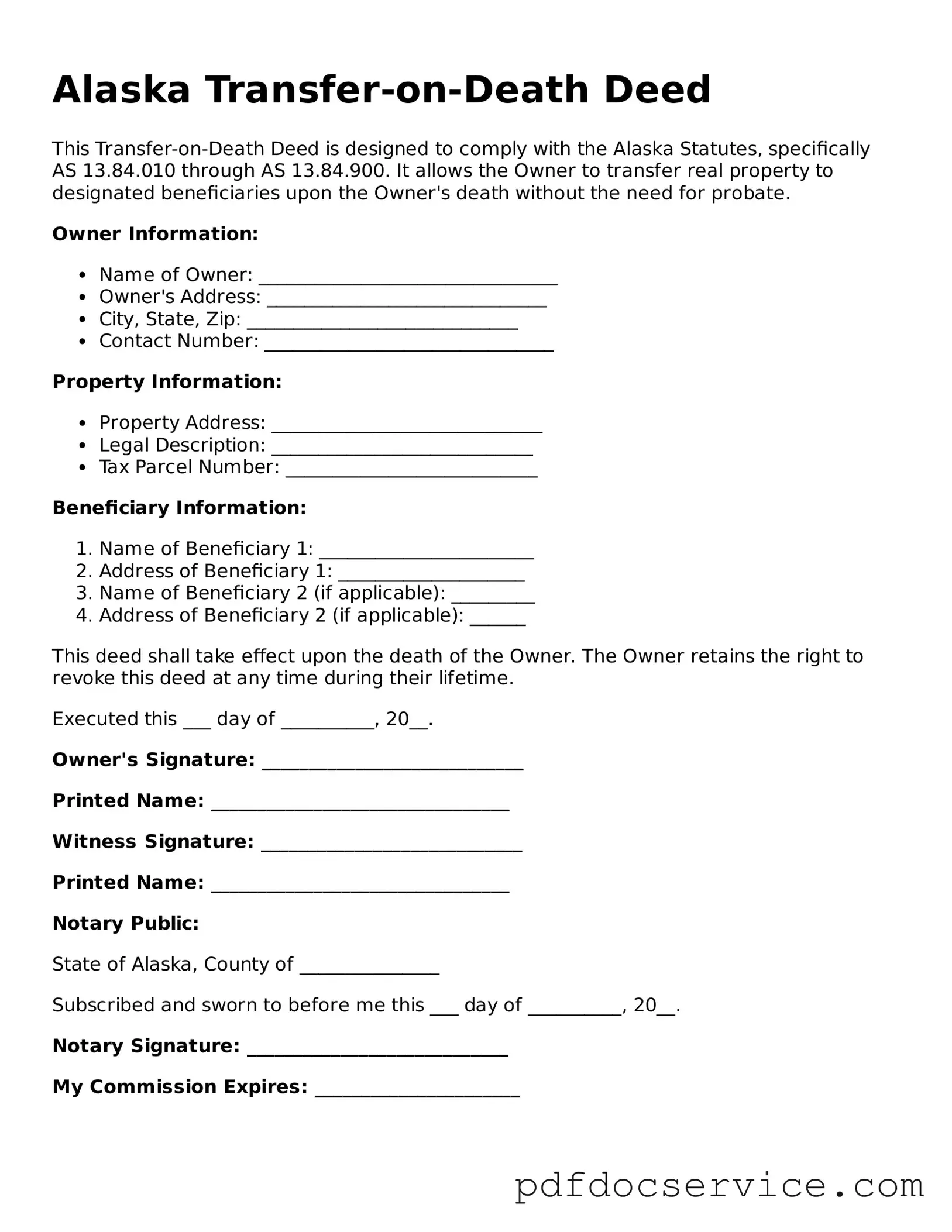Printable Transfer-on-Death Deed Template for Alaska
The Alaska Transfer-on-Death Deed form allows property owners to designate a beneficiary who will receive their property upon their death, without the need for probate. This legal tool provides a straightforward way to transfer real estate, ensuring that your wishes are honored. Understanding how this form works can help you make informed decisions about your estate planning.
Open Transfer-on-Death Deed Editor
